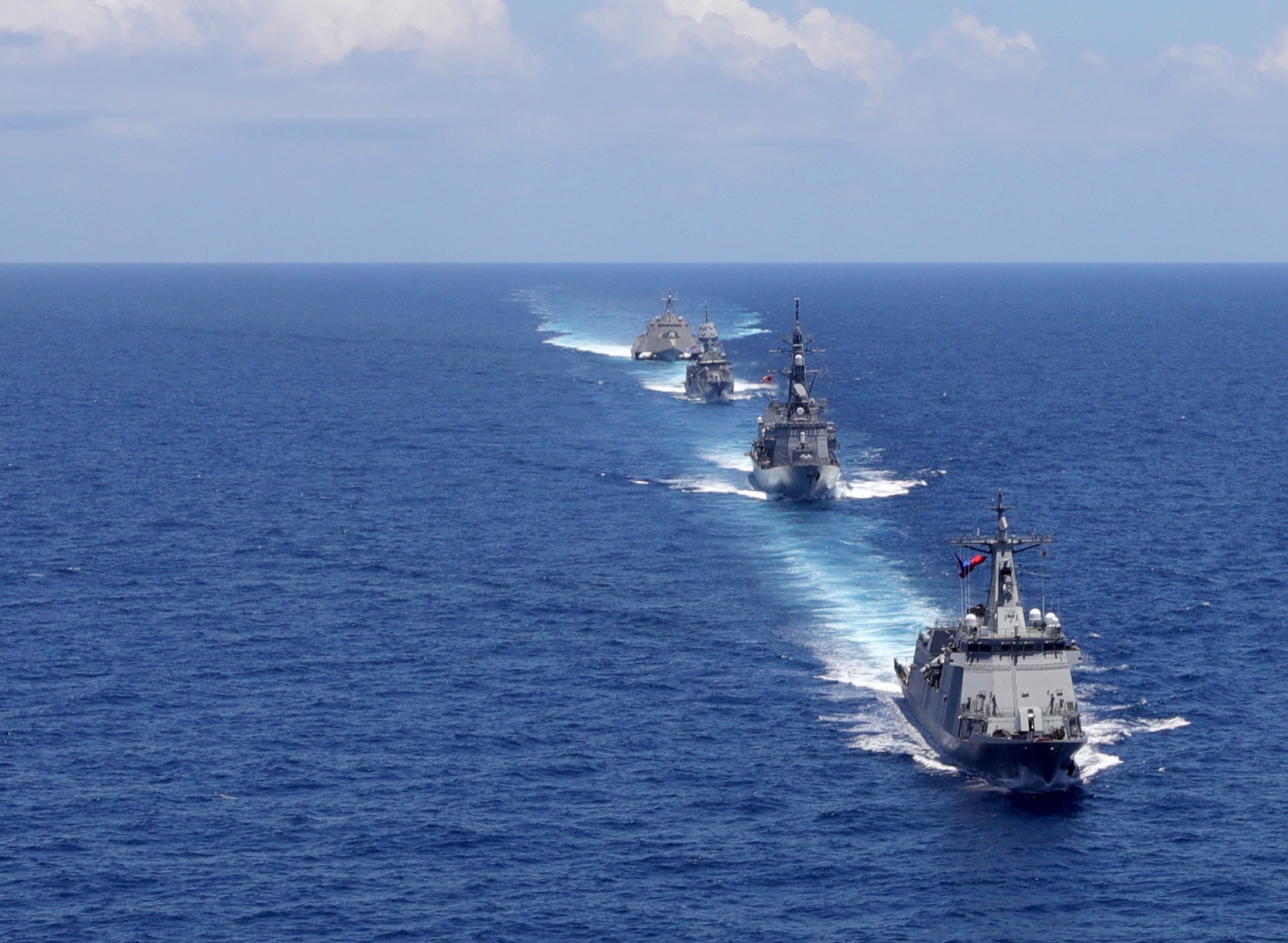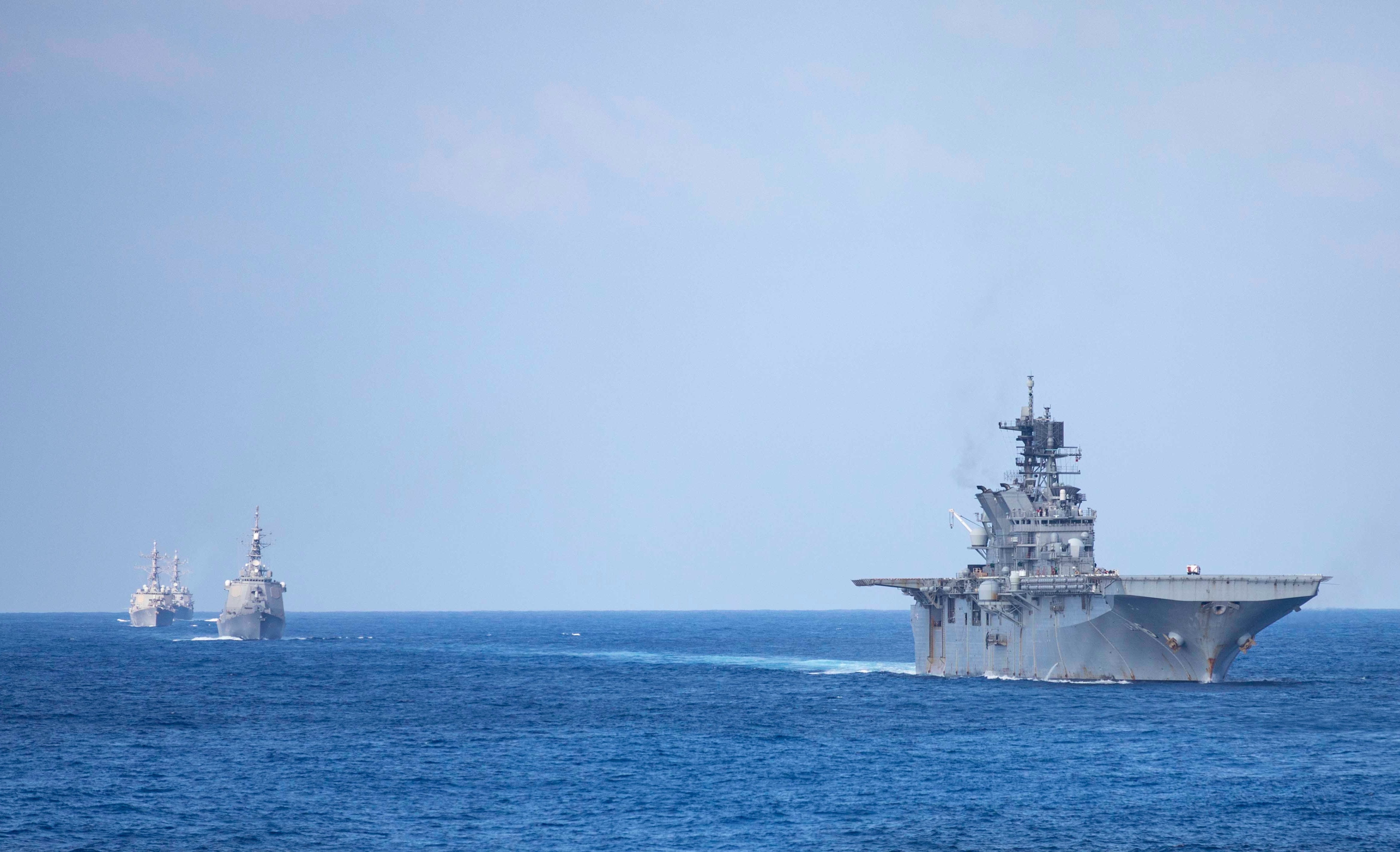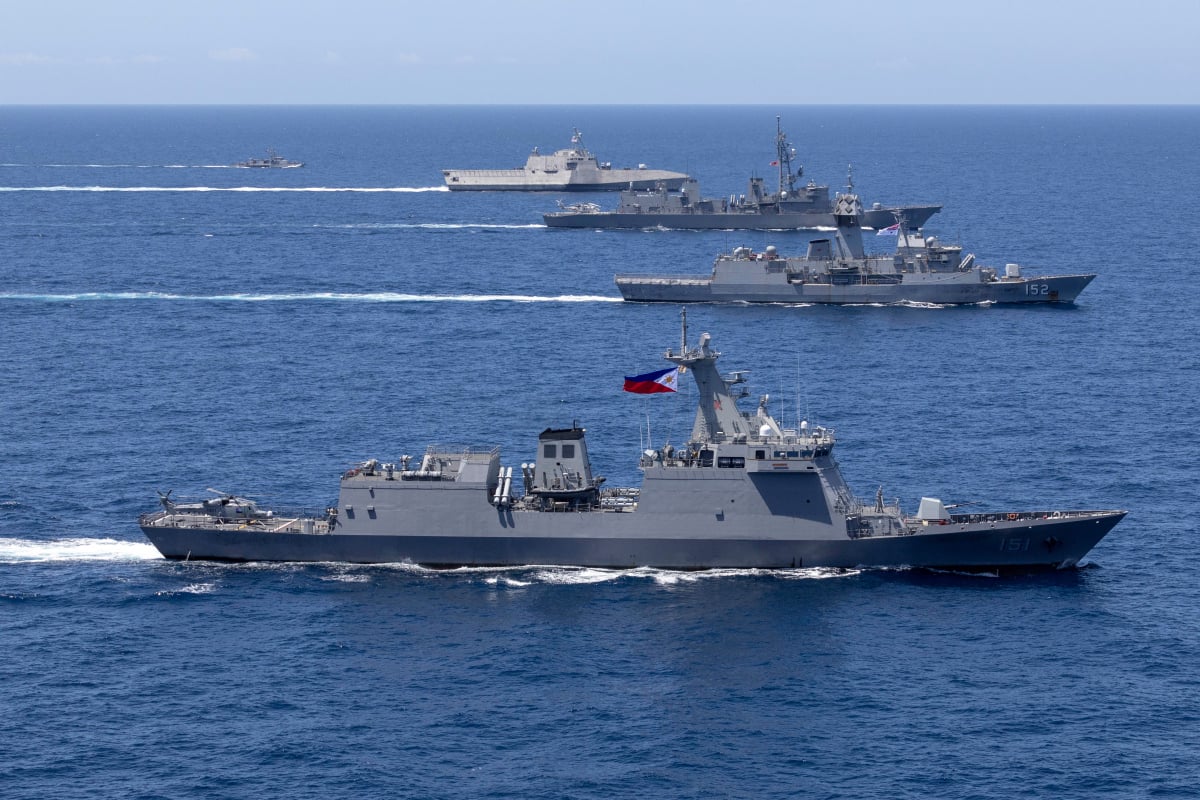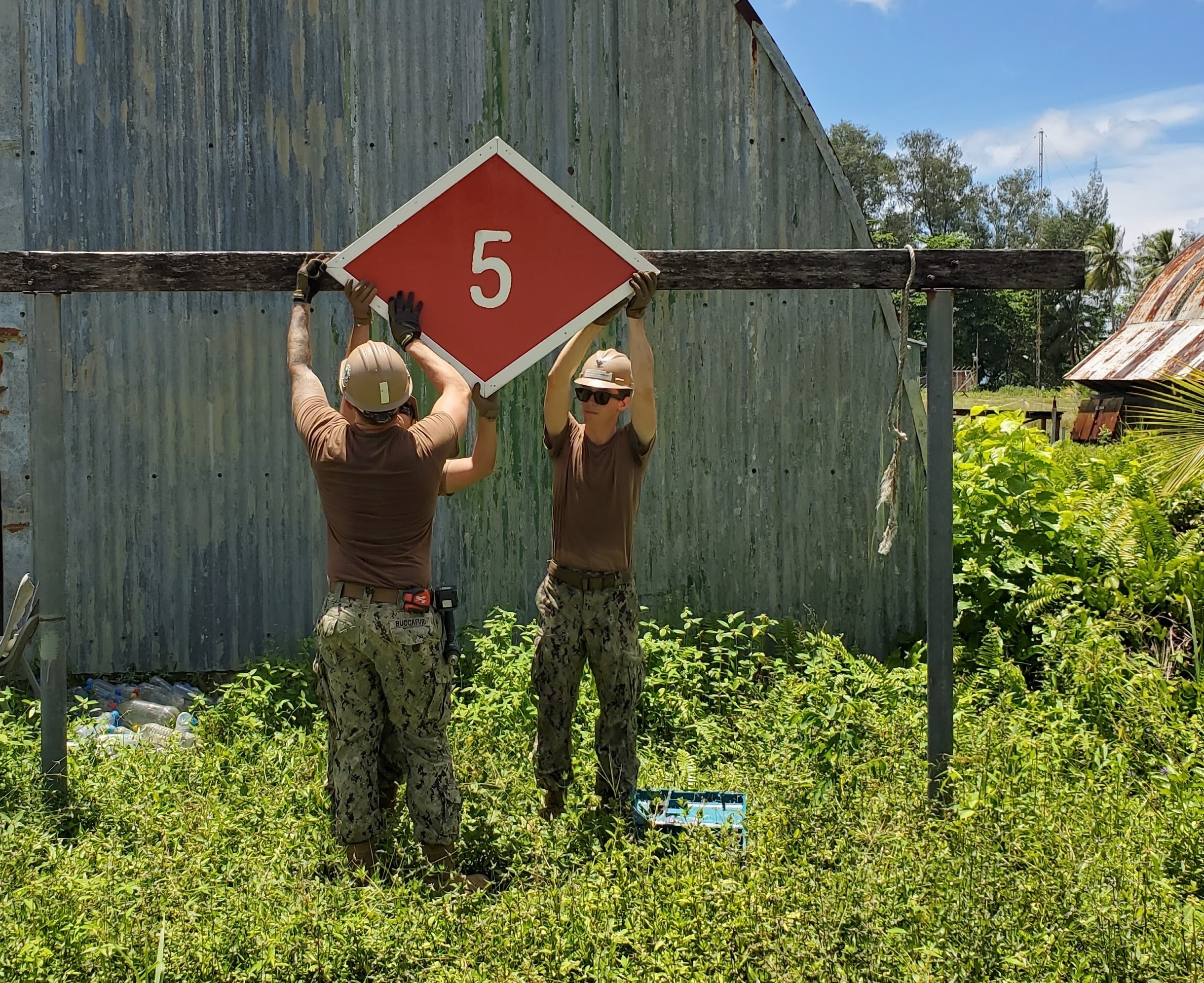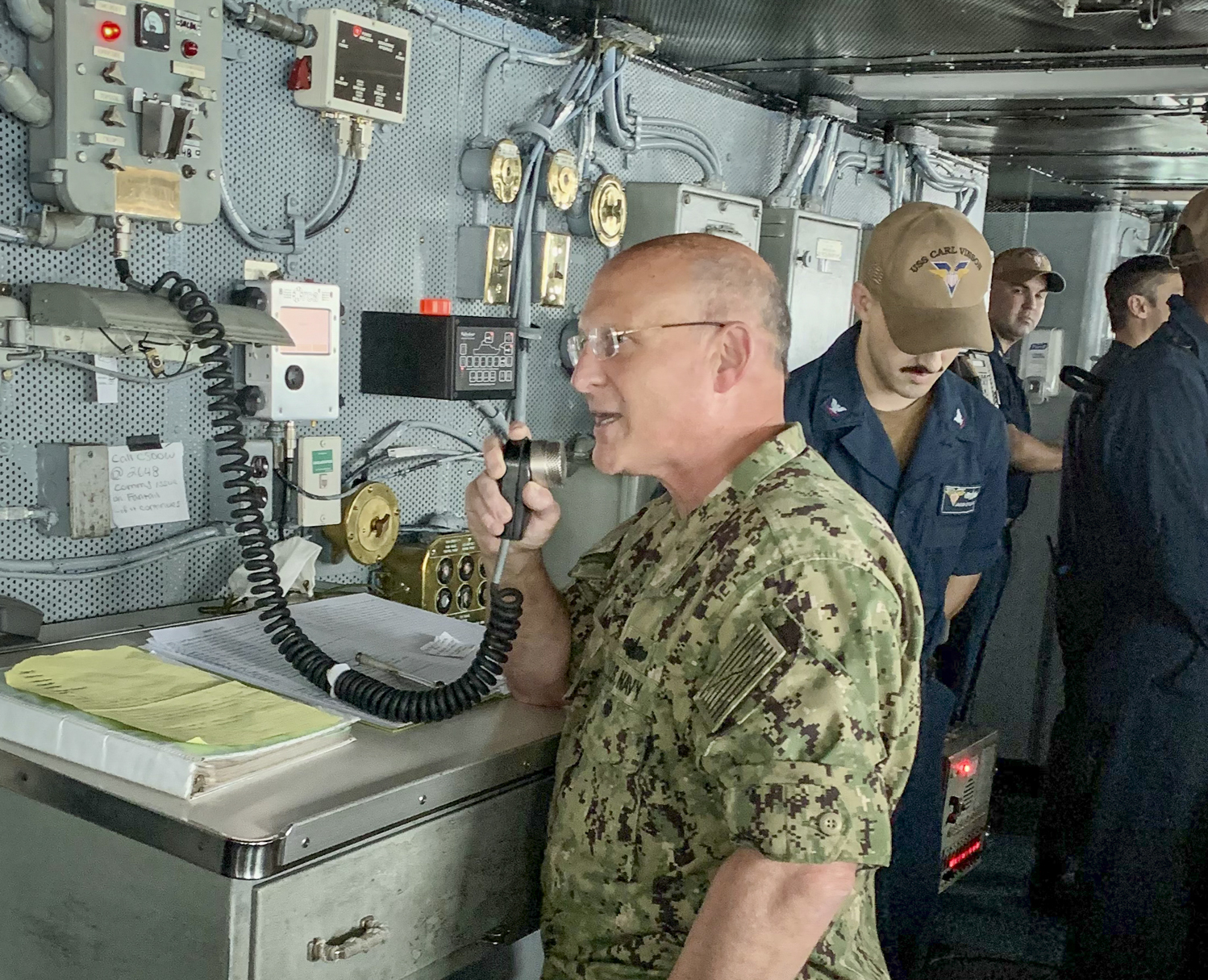
KUALA LUMPUR – The United States and its partners conduct exercises in the Indo-Pacific so like-minded countries and navies can work toward interoperability, not to send a message toward a specific country, Chief of Naval Operations Adm. Mike Gilday said Thursday.
“There are dozens of exercises every year that are bilateral, trilateral, quadlateral, multilateral exercises that the United States participates in the Indo-Pacific region. Malabar is one of them. It’s an important exercise like everyone of them is, but these are not intended to be provocative. The intent is to operate side-by-side with like-minded navies, democracies, nations who want to keep trade routes free and open … we’re not pointing towards China. We focused on being more interoperable together, to maintain free and open maritime commons,” Gilday said at a media conference aboard aircraft carrier USS Carl Vinson (CVN-70) during the Malabar Phase II exercise.
Gilday was hosting a delegation of 12 senior Indian Navy officers – including Chief of Naval Staff Adm. Karambir Singh and Vice Adm. A.B. Singh, commanding-in-chief, Eastern Naval Command – aboard Vinson to observe the second phase of Malabar. In a news release, Gilday said the visit was an important opportunity to see first-hand the integration at sea between the U.S and Indian navies.
“By our navies continuing to exercise together, as we are doing right now alongside Japanese and Australian naval forces, there is no doubt our partnership will only continue to grow. Cooperation, when applied with naval power, promotes freedom and peace, and prevents coercion, intimidation and aggression,” Gilday said in the release.
During the media conference, Gilday said the U.S. Navy intends to further enhance its cooperation with the Indian Navy, though he did not provide any specifics.
“Our intention over the coming weeks, months, years, is to operate much more closely with them. We feel that we’re natural partners, not only with the nation of India but with the Indian Navy. We’ve been operating together for decades and right now we’re on a very healthy glide slope to continue to increase that interoperability,” Gilday told reporters.
During a Friday speech in Mumbai to India’s Western Naval Command, Gilday emphasized the importance of exercises like Malabar and Rim of the Pacific to hone interoperability.
“Today, we are achieving high-end interoperability across all facets of naval operations … not only with each other … but with other like-minded partners,” Gilday said, according to a transcript of the speech. “With information and competency running deep in our partnership … we raise the sail for our most effective way of building trust … combined operations.”
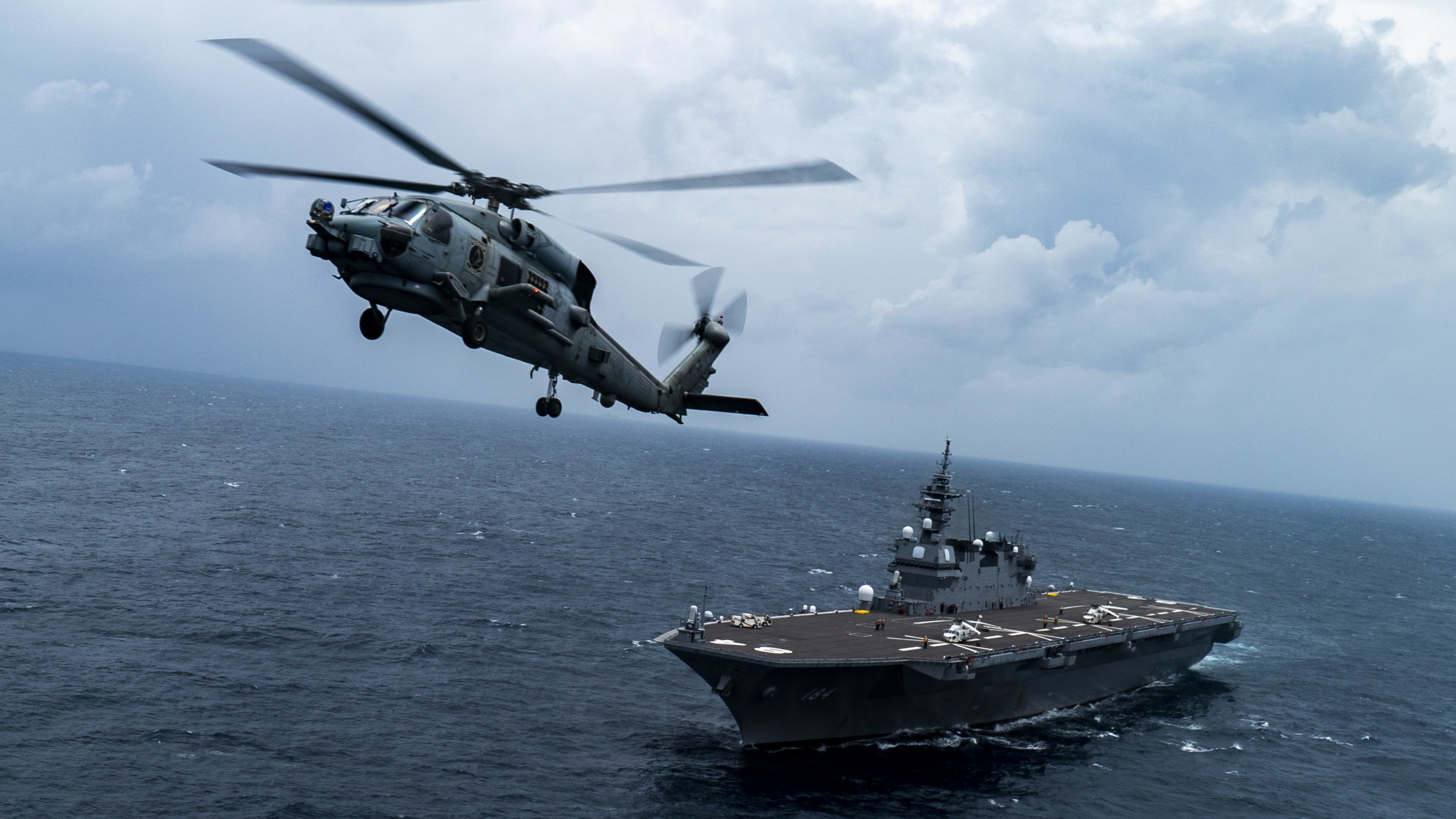
The second phase of Malabar began on Monday in the Bay of Bengal and concluded on Friday. Phase One of the exercise took place in the Philippine Sea and around Guam from at the end of August.
U.S forces involved in Malabar Phase II are Carrier Strike Group 1, which includes Vinson with embarked Carrier Air Wing 2 (CVW 2), cruiser USS Lake Champlain (CG-57) and destroyer USS Stockdale (DDG-106), with the replenishment ship USNS Yukon (T-AO-202) and a P-8 Poseidon maritime patrol aircraft rounding out the U.S contingent for the exercise. Japan’s participation includes helicopter destroyer JS Kaga (DDH-184) and destroyer JS Murasame (DD101), which are deployed as part of the Japan Maritime Self-Defense Force’s Indo-Pacific Deployment 2021 (IPD21) task group. Australia’s Malabar contingent features frigate HMAS Ballarat (FFH155) and replenishment ship HMAS Sirius (O266), while India is participating with destroyer INS Ranvijay (D55), frigate INS Satpura (F48), P-8I maritime patrol aircraft and a submarine.
Both the JMSDF and Australia’s Department of Defence issued news releases on the conclusion of the exercise.
“Japan – U.S. – India- Australia (commonly known as the ‘Quad’) conducted Malabar 2021 Phase 2 in the Bay of Bengal, following Phase 1 in the Western Pacific in August. In this exercise, advanced tactical training such as anti-submarine warfare training was conducted to enhance our tactical skills and cooperation with the navies of the ‘Quad’ countries,” Rear Adm. Ikeuchi Izuru, the commander of the IPD21 task group, said in the JMSDF news release.
Royal Australian Navy Fleet Commander Rear Adm. Mark Hammond said in the Department of Defence release that the exercise further strengthened Australia’s ties with partners.
“Exercise Malabar built our collective ability to meet shared challenges in pursuit of an open, inclusive and resilient Indo-Pacific,” Hammond said.
Most of the units involved in Malabar are now moving on for an exercise with the United Kingdom Royal Navy Carrier Strike Group 21 (CSG 21). Australia, Japan, the United Kingdom and the U.S. will conduct a joint exercise that starts Friday and continues through Monday, the JMSDF said in a Friday news release.
Participants for the exercise will include the JMSDF IPD 21 task group of Kaga and Murasame, the Carl Vinson Carrier Strike Group – Vinson, Lake Champlain and Stockdale – along with Yukon and a P-8 Poseidon, and the current main body of CSG 21. That includes aircraft carrier Queen Elizabeth (R08), destroyers HMS Defender (D36) and USS The Sullivans (DDG-68), frigate HMS Richmond (F239) and replenishment ships RFA Fort Victoria (A387) and RFA Tidespring (A136). Australian frigate Ballarat will also join for the exercise.
The U.K. High Commission of India in a Friday news release said CSG 21 will conduct port calls in India and will then undertake a major exercise with India. Other elements of CSG 21 are now heading to port calls in South Asia – Dutch frigate HNLMS Evertsen (F805) is headed to Mumbai and U.K. frigate HMS Kent (F78) arrived in Chattogram, Bangladesh on Thursday. Destroyer HMS Diamond (D34) appears to be the only element of CSG 21 in southeast Asia, as it wraps up its participation in the Five Powers Defence Arrangement Exercise (FPDA) Bersama Gold exercise on Monday with a FPDA Naval display off Singapore to commemorate 50 years of the FPDA. The location of an Astute-class submarine assigned to CSG 21 is unknown but is likely in the Indian Ocean with the main body of CSG 21.


